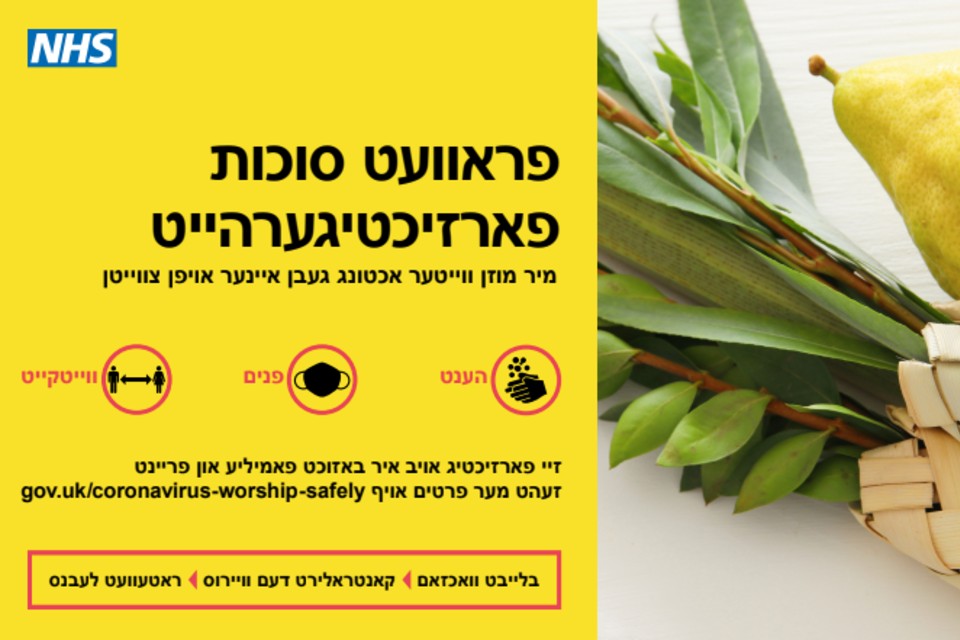How focused communication benefitted a vulnerable community facing a surge of COVID-19
Coronavirus (COVID-19) and the urgency required from the Government’s response presented an unparalleled challenge around reaching all communities.

Intermediaries and community representatives in ethnic minority and faith communities informed the Cabinet Office National Resilience Hub’s External Affairs team that many do not engage in the same way or as often as the general population with central or local government messaging. They often need intermediaries to endorse or facilitate information.
Using principles set out as part of the GCS Principles for Inclusive Campaigns, the National Resilience Hub spearheaded an approach, reflecting the Government’s aim of ensuring no community would be left behind.
Working in collaboration with many External Affairs and media teams in government departments including Department for Business, Enterprise and Industrial Strategy (BEIS), Ministry for Housing, Communities and Local Government (MHCLG) and Department for Work and Pensions (DWP), the National Resilience Hub set out to engage directly with communities, through community leaders, advocacy groups and influencers, to explain government policy, to engage on vaccine hesitancy and to deliver insight that would address policy barriers and reduce delivery challenges.
As the nation emerged from national lockdown last summer, COVID-19 health data and stakeholder engagement insight suggested that some communities were still seeing higher than average numbers of cases.
Patterns of disengagement played out in the data. Those communities who weren’t being reached via COVID-19 guidance through mainstream routes (such as Prime Ministerial press briefings and national media channels) experienced higher infection rates.
Feedback and insight from community partners in Hackney, for example, showed specific reasons for the higher transmission rates including digital exclusion, language issues and distrust. This is how the National Resilience Hub addressed those challenges through their work with the Strictly Orthodox Jewish community in Hackney and across England.
Challenge 1: digital exclusion
The general government guidance and advice designed to protect people against COVID-19 was not getting through, as it was largely using the mainstream media and digital media.
As a community which doesn’t engage with the above channels as much as other audiences, the Strictly Orthodox groups were facing a dearth of communication of public health messages. Therefore, other channels and means of engagement would be needed to make an impact on transmission rates.
Through working with trusted influencers in the community, such as Jonathan Klajn, Project Director, of the Jewish Community Council of Gateshead, we found an alternative approach that included creating bespoke posters, including safety advice.
Navigating the digital barriers, influential community gatekeepers printed and mailed posters to people in their communities. We learnt that WhatsApp was the exception to the ‘no digital’ rule. We, therefore, used this to co-create and share assets designed to address vaccine disinformation and signpost people to credible information and partners.
Challenge 2: language barriers
We worked with a range of partners including the Union of Hebrew Congregations, the Board of Deputies of British Jews and the Interlink Foundation, to co-create COVID-19 safety materials translated into Yiddish, a language used in the community everyday.
Communication in Yiddish conveys a clear message that the needs of the community are important and the correct translations give credibility to the approach, and raises awareness and trust in the community.
We translated advice leaflets and also created digital assets for mainstream Jewish organisations in Yiddish.
We met regularly with trusted voices from the areas with significant Strictly Orthodox communities – Hackney, Barnet, Manchester, Canvey Island and Gateshead – to build a trusted relationship with the government, refining and developing materials throughout.
Community response
The response from the community has been very positive. An influential member of the communication working group, we set up to coordinate our work, said the activity had made the community feel as though they matter.
Director of Public Affairs at the Board of Deputies of British Jews, Phil Rosenberg, has credited the approach with saving lives:
“You have been very diligent and committed in getting to grips with the Strictly Orthodox Jewish community around the Coronavirus pandemic. I believe your contribution has helped protect lives among the strictly Orthodox community and their neighbours around Britain.”
Furthermore, the communications campaign with the Strictly Orthodox Jewish community has directly resulted in lowering infection rates and increasing vaccine uptake. In December 2020, Hackney had 913 cases per 100,000 and by April 2021 it had 16. This of course includes everyone else in the London borough, but from being one of the most impacted groups, the community has become one of the least.
Lessons learned
Sometimes the mesmerising success and attraction of the digital world, while vital for the mainstream, is not appropriate for some harder-to-reach communities.
For our future communications, we need to start with an in-depth awareness of the community that we are focusing on, with particular emphasis on any language or cultural differences.
Another lesson is that in times of crisis, people seek reassurance from community gatekeepers and intermediaries, even if they do also consume mainstream media. This means that direct engagement, including tailored and targeted information, are an effective way to amplify and increase the credibility of our messages.
Find out about Inclusive communication from the Office for Disability Issues and Department for Work and Pensions (GOV.UK)
